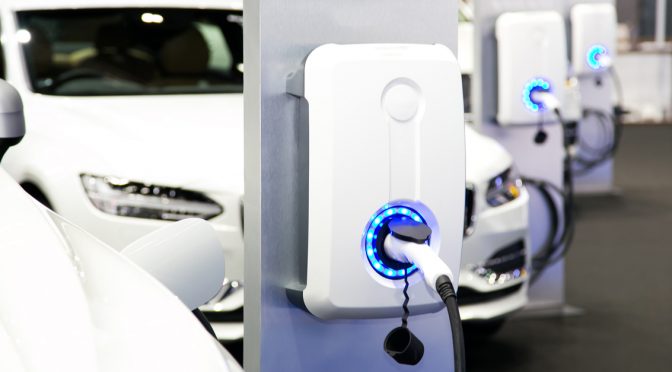As electric vehicle (EV) sales around the world continue to grow, China’s dominance in the market has sparked a global debate. “With two-thirds of China’s power batteries produced in 2023 being iron-based, Chinese cell producers have capitalised on their expertise in low-cost chemistry,” said Max Reid, principal analyst, electric vehicles & battery supply chain service from Wood Mackenzie. “This has allowed China to announce advancements in fast-charging and energy density improvements, putting foreign brands at risk of losing market share.”
Wood Mackenzie recently released ‘Electric vehicle & battery supply chain: 5 things to look for in 2024’ report covering policies, EV sales and raw materials supply, and the role of foreign automakers. With EVs at the forefront of global geopolitics, 2024 is anticipated to be a pivotal year for transport electrification.
US elections – the stick for vehicle electrification under threat
As the 2024 United States election race enters its final stretch, policies surrounding EVs will be a major campaign point for leading candidates. Democrats will emphasise job growth benefits in the “battery belt” and reduced pollution-related deaths through EV adoption. In contrast, Republican candidates will argue against reduced purchasing freedom for US individuals, while claiming that the uptick in EV purchases will indirectly benefit Chinese entities.
“Leading Republican candidates have made their intention to scrap the US$7,500 federal EV subsidy and add an EV tax explicitly clear,” Prateek Biswas, analyst of transport and materials at Wood Mackenzie, stated. “A rollback of the 2027-32 emission and fuel economy standards, combined with removed purchase subsidies, would not only pull back EV investments by the legacy auto sector but also dent the profitability and future investment potential of global EV leaders like Tesla,” Biswas said.
Foreign automakers will continue to be outmanoeuvred in China
China has wholeheartedly embraced EVs as part of its strategy to become a high-end goods manufacturing powerhouse. Unlike foreign brands, Chinese carmakers have prioritised enhancing in-vehicle software, a crucial factor for the average younger Chinese vehicle buyer. This shift not only threatens existing profit streams but also endangers the future growth potential of foreign brands. As the largest passenger car market globally, China’s continued rapid growth is vital. Any slowdown could result in significant drops in margins due to the rising underutilisation of existing internal combustion engine (ICE) vehicle plants.
Chinese EV onslaught in Europe: a moment of truth
As the European Commission prepares to conclude its anti-subsidy probe on China-origin EVs, the future of the European EV market hangs in the balance. Countervailing duties on Chinese imports are expected, posing a significant threat to the sales potential of leaders in the European EV market, including Tesla, Dacia, and MG, who heavily rely on importing volume models from China.
Egor Prokhodtsev, senior research analyst, transportation & mobility at Wood Mackenzie emphasised the broader implications of the potential duties, stating, “Beyond the impact on made-in-China EVs, however, the primary influence would be on the region’s EV penetration rate. Far from improving sales of made-in-Europe EVs, the measures would reduce competition and allow European automakers to take their foot off the gas, especially considering the weakened Euro 7 vehicle emission norms.”
Cellmakers to expand chemistry options
According to lithium-ion battery data from the China Automotive Battery Innovation Alliance, of the 747 GWh of power batteries produced in China over 2023, only 387 GWh were installed into products. According to Wood Mackenzie, automakers are likely sitting on secured cell supply for EV sales that failed to materialise. With storing batteries being an expensive business, automakers may have a more cautious appetite for purchasing cells in 2024. As cell prices decline, Western automakers will consider forgoing state subsidies tied to domestic manufacturing in favour of more affordable cells from China, thereby reducing overall EV costs. Non-Chinese Tier-1 cell manufacturers will seize this opportunity to explore lithium iron phosphate (LFP) and lithium manganese iron phosphate (LMFP) cells, accommodating both cost-effective EV models and high-end models equipped with nickel-based batteries.
A decisive year for low cost batteries
Wood Mackenzie forecasts surpluses of lithium, cobalt, nickel, and graphite to continue for several years, providing relief to cell producers and alleviating concerns over rising materials costs. While the decrease in raw material costs provides some breathing room for midstream producers, such as cathode, anode, and cell manufacturers, to expand margins and invest in research and development, it also presents an opportunity to gain market share in the Western EV market. As the industry aims to transition from early adopters to the mass market, the availability of low-cost EVs will be crucial.
“As the Chinese EV market continues to evolve, foreign automakers face a critical juncture in their strategic decision-making. Adapting to the unique demands of the Chinese consumer and forging partnerships with domestic innovators may prove pivotal in securing their position in this dynamic landscape,” Reid concluded.
Wood Mackenzie is the global insight business for renewables, energy and natural resources


